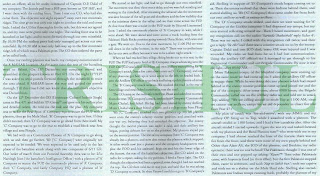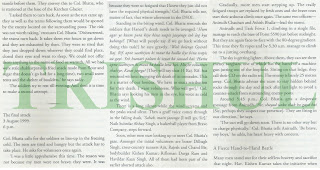1965 & 1971 Period
Saga Of 7 Guards Battalion
Centrifugal Multi-Directional Attack Concept
Limited, High-Intensity Mountain Warfare Under Nuclear Overhang In 1999
Within the Indian Army’s HQ Northern
Command, a committee headed by the then Chief-of-Staff of the Command, was
constituted in 1999 to examine the planning and conduct of OP Vijay and collate all
in-theatre battle accounts. However, this commuttee neither had access to any
data concerning the planning and conduct of OP Safed Sagar from the Indian
Air Force, nor was it able to interview any IAF officers. Similarly, any
data concerning the the Indian Navy’s OP Talwar was unavailable to this
committee. Moreover, this committee’s report has not been disseminated within
the larger military community of India. Even today, the operational commanders
who fought the war have rarely been invited to staff and war colleges, to
discuss the broader lessons. And to top it all, India’s Ministry of Defence
till this day refuses to publish the official history of this limited but
high-intensity war. Consequently, what follows below are the best-available authoritative
data collated from a variety of published sources over the years.
Lessons For Infantry
Perfidy At Turtok
Lessons For Field Artillery Fire-Assaults
Lessons For Rotary-Winged Aviation Employment
Lessons For Ground-Based Air-Defence
Battlefield Communications Challenges
Battlefield Logistics & Combat Support Arms Imperatives
From the above, the following inferences can be drawn:
1) High-Altitude Mountain Warfare of the type fought by
the Indian Army (IA) and Indian Air Force (IAF) since 1947 is distinctly
different from Highland Warfare and High-Altitude Plateau Warfare—a distinction
often ignored by many.
2) Consequently, all the preparatory operational
protocols of both the combat and combat-support arms of the IA and IAF will
have to originate from the experiences gained only by both these armed
services, since no one else in the world has either the intent or will to
engage in full-contact kinetic operations at such forbidding heights.
3) As a result of the above,
no one else in the world will either develop or offer to develop the kind of
weapons platforms, weapon systems and combat-support hardware that is required
for warfighting in the unique high-altitude operating environment and areas. For
instance, the thin air at such altitudes (between 14,000 feet and 18,000 feet)
requires larger-diameter parachutes for paratroopers and this in turn creates a
greater opening shock. It is more than 13 G in Ladakh when using the 26kg HAPP,
whereas the maximum acceptable opening shock for US paratroopers is 10 G and
for Russian paratroopers is 13 G. Similarly, since the service ceilings of
attack helicopters like the Mi-35P and AH-64E Apache are 16,100 feet and 20,000 feet,
respectively, such platforms will be able to operate with only minimal
offensive payloads (like standoff air-to-surface PGMs) between 14,000 feet and
18,000 feet, while homegrown platforms like the LCH (with a service ceiling of 21,300 feet)
and the LUH (service ceiling of 21,300 feet) too will suffer from similar
performance limitations (contrary to what these two clowns would want us to
believe here: https://www.youtube.com/watch?v=7fJY4bFF6yI&t=2s).
In addition, the ever-present threat from shoulder-fired MANPADS will ensure
that no rotary-winged flying platform will ever be able to undertake straffing
runs against hostile infantry entrenchments in mountaintops and ridgelines
located between 14,000 feet and 21,000 feet ASL.
4) This then presents Indian
industry with both a unique challenge and unique opportunity for developing
suitable innovative solutions for the captive markets in arenas like cargo-carrying
VTOL-UAVs, VTOL-UAVs for CASEVAC, development of lightweight, modular helipads capable
of accommodating LUH-type helicopters, development of lightweight helipad
lighting-markers and air-droppable POL/water storage bowsers, etc etc.
5) For facilitating sustained
battlefield logistics support and life-saving CASEVAC, enormous investments
need to be made for procuring light single-engined, light twin-engined,
medium-lift utility and heavylift utility helicopters. Likewise, similar
investments are required for procuring heli-portable ultralightweight field
artillery 155mm howitzers and heli-portable weapon-locating radars.
6) For providing immediate
air-support from standofff distances at altitudes between 14,000 feet and 21,000
feet, the IAF will need to procure slower-flying platforms like the Hawk Mk.132,
which in turn will need to be made capable of launching lightweight, small-diameter
guided-/gliding-PGMs like the SAAW (modified for carrying bunker-bursting
warheads). This is because past experience has repeatedly revealed (during both
1971 and 1999) that platforms like the Su-7BM, MiG-23BN and MiG-27M, due to
their higher cruising speeds, take a considerably longer time to acquire their
targets and have often have had to make multiple passes over their targets before
locating them, which in turn had caused the hostile AAA assets to be activated
well in time and with devastating effect.
7) The infantry needs to be equipped with new-generation
extended-range, hand-fired munitions fired from presently-available
grenade-launchers. Presently, low-velocity 30mm/40mm rounds with 800 metre-range can
be fired from hand-held grenade-launchers or under-barrel launchers, while
high-velocity round with 2km-range are fired from tripod-mounted manportable
automatic grenade launchers. While Raytheon has already developed the Pike
guided 40mm grenade round, another solution comes from DefendTex, whose Drone-40
is a low-cost, programmable 40mm munition that is fired from a hand-held 40mm launcher
in order to get it aloft. To attain flight mode, it deploys four helicopter-style
rotors to stabilise, move, and provide lift for loiter. It offers 12 minutes of
flight time and/or 20 minutes of loiter time. Cruising speed is 20 metres/second
and range at optimum speed is in excess of 10km. It will travel to a designated target
zone that was pre-programmed pre-flight. Operators will be able to cancel and
self destruct the D-40 in mid-flight using technology like directed Wi-Fi
signals.
(to be concluded)






















































































